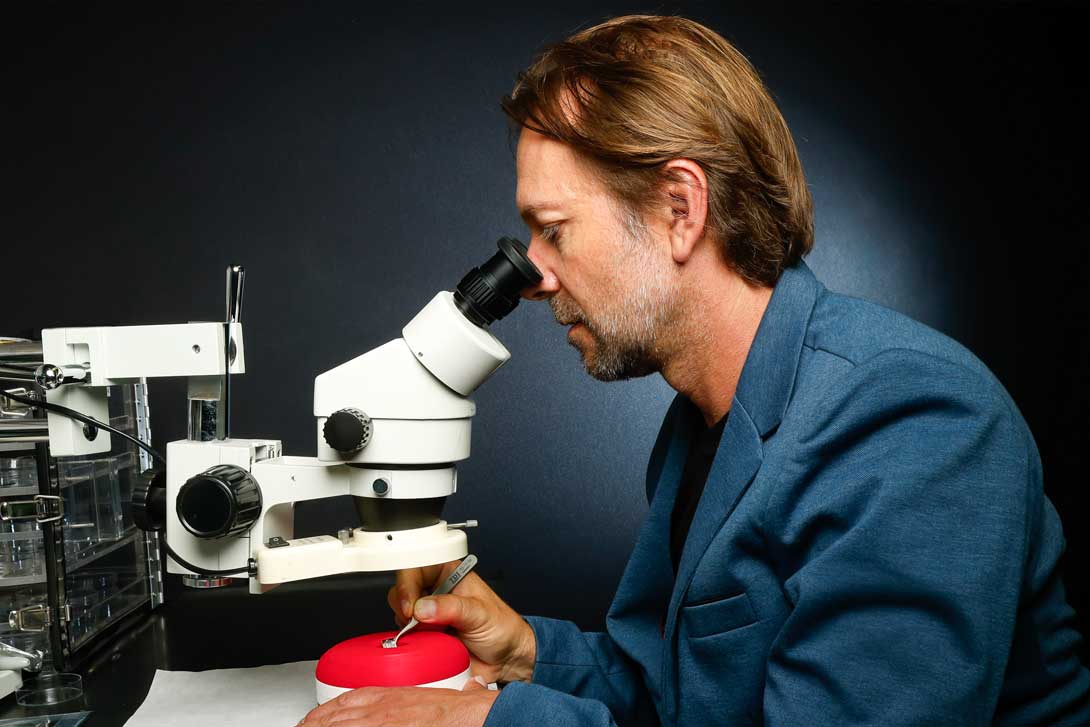Smoke detector for viruses
Text block one

The COVID-19 pandemic spiked anxiety about an invisible threat: airborne viral particles. The inability to detect the presence of these microscopic pathogens necessitated the disruptive precautionary measures of the pandemic. Two researchers at UIC have collaborated on a device that could detect SARS-CoV-2, influenza, RSV and other pathogens. The technology, called BioAerium, could dramatically improve disease surveillance for public health as well as research on how viral particles move through the air.
The device earned its creators Igor Paprotny, associate professor of electrical and computer engineering, and Michael Caffrey, professor of biochemistry and molecular genetics, the 2022 Inventor of the Year award from UIC.
While COVID-19 accelerated the urgency of Caffrey and Paprotny’s project, their collaboration formed before the pandemic, with the flu virus as their initial target. Paprotny’s expertise is in the study and design of microfluidic systems, which work with tiny amounts of fluid, usually liquid; however, most of his devices work to detect aerosols – minute particles in the air.
Devices for detecting airborne viruses already exist, but they are bulky and expensive, making them impractical for widespread use. The technique for identifying a target virus, DNA amplification, is traditionally performed in a laboratory, so that step needs to be both automated and miniaturized to create a portable or wearable detector.
Recent “lab-on-a-chip” technologies – like what makes a home COVID-19 test work – address this challenge, but typically require high-concentration samples from saliva or a nose swab. So Caffrey and Paprotny needed to tackle two challenges: shrinking down the biochemical analysis and collecting enough viral particles from the air for it to work.
“We’re in this nice sweet spot where we had a lot of technology that was already developed on the air microfluidic side, and we connected with Mike who was an expert on the virology side,” Paprotny said. “By connecting the two together, we could come up with this device that’s really novel and has a lot of promise going forward.”